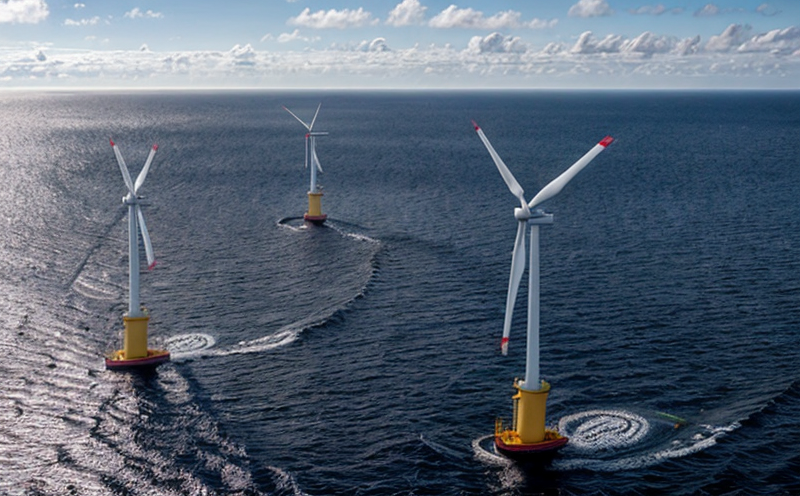Vibration Resistance of Offshore Wind Turbine Structures
Unlocking the Power of Offshore Wind Ensuring Vibration Resistance for Turbine Structures
As the world shifts towards renewable energy sources, offshore wind turbines have emerged as a vital component in meeting global energy demands. These massive structures harness the power of wind to generate electricity, but their operation is not without challenges. One critical aspect that requires attention is the vibration resistance of these turbine structures. In this article, we will delve into the importance of vibration resistance, its benefits, and how Eurolabs laboratory services can help ensure the reliability and efficiency of your offshore wind turbine structures.
What is Vibration Resistance of Offshore Wind Turbine Structures?
Vibration resistance refers to the ability of a structure to withstand vibrations caused by various factors such as wind, waves, or mechanical stress. In the context of offshore wind turbines, vibration resistance is crucial in maintaining the structural integrity and performance of these massive structures. When wind turbine blades rotate, they generate immense forces that can lead to vibrations, which if not managed properly, can compromise the structures stability and longevity.
Why Vibration Resistance Matters for Offshore Wind Turbine Structures
The consequences of inadequate vibration resistance can be severe
Reduced lifespan Excessive vibrations can accelerate wear and tear on turbine components, leading to premature failure.
Decreased efficiency Vibrations can affect the turbines aerodynamic performance, resulting in reduced energy production.
Increased maintenance costs Repeated repairs and replacements can burden businesses with significant financial expenses.
The Benefits of Vibration Resistance of Offshore Wind Turbine Structures
By investing in vibration resistance testing and assessment, you can reap numerous benefits
Advantages for Businesses
Enhanced reliability Ensure your turbines operate at optimal levels, reducing downtime and increasing overall efficiency.
Cost savings Prevent costly repairs and replacements by identifying potential issues early on.
Compliance with regulations Meet industry standards and regulatory requirements for offshore wind turbine structures.
Key Benefits in Detail
Improved structural integrity Vibration resistance testing helps identify weaknesses in the structure, enabling targeted improvements.
Increased energy production By optimizing turbine performance, businesses can generate more electricity and reduce their carbon footprint.
Enhanced safety A robust vibration resistance assessment ensures a safer working environment for maintenance personnel.
Benefits for Engineers and Technicians
Informed design decisions Accurate vibration resistance analysis enables engineers to make data-driven design choices.
Efficient troubleshooting Identify potential issues quickly, reducing downtime and maintenance costs.
Competitive advantage Demonstrate your commitment to quality and safety by investing in vibration resistance testing.
Benefits for Environment
Reduced waste Minimize material waste by identifying areas for improvement early on.
Increased renewable energy production By optimizing turbine performance, businesses contribute to a more sustainable future.
Environmental protection Ensure offshore wind turbines operate within environmental guidelines, protecting marine ecosystems.
QA Vibration Resistance of Offshore Wind Turbine Structures
What is the purpose of vibration resistance testing?
Vibration resistance testing aims to assess the ability of offshore wind turbine structures to withstand various types of vibrations. This helps identify potential weaknesses and inform design improvements.
How does Eurolabs laboratory service ensure accuracy in vibration resistance assessment?
Eurolab employs advanced equipment and techniques, ensuring accurate and reliable results. Our experienced team provides comprehensive reporting and recommendations for improvement.
Can I conduct vibration resistance testing on-site or do I need to send samples to a laboratory?
Both options are available. On-site testing can be performed using portable equipment, while laboratory testing offers more precise and detailed analysis.
What types of offshore wind turbine structures benefit from vibration resistance assessment?
All types of offshore wind turbines, including fixed-bottom, floating, and bottom-fixed structures, can benefit from vibration resistance assessment.
How long does a vibration resistance test typically take?
The duration of a vibration resistance test depends on the complexity of the structure and the testing method employed. Eurolabs laboratory services offer flexible scheduling to accommodate your needs.
Conclusion
Investing in vibration resistance of offshore wind turbine structures is crucial for businesses seeking to optimize performance, reduce costs, and ensure compliance with regulations. By partnering with Eurolab, you can unlock the full potential of your turbines and contribute to a more sustainable energy future.
Eurolabs laboratory services provide comprehensive testing and assessment for vibration resistance, helping engineers and technicians make informed design decisions. With a focus on accuracy, reliability, and customer satisfaction, Eurolab is the trusted partner for offshore wind turbine structure owners and operators worldwide.
Take the first step towards ensuring the reliability and efficiency of your offshore wind turbines today by contacting Eurolab to discuss your vibration resistance testing needs.




